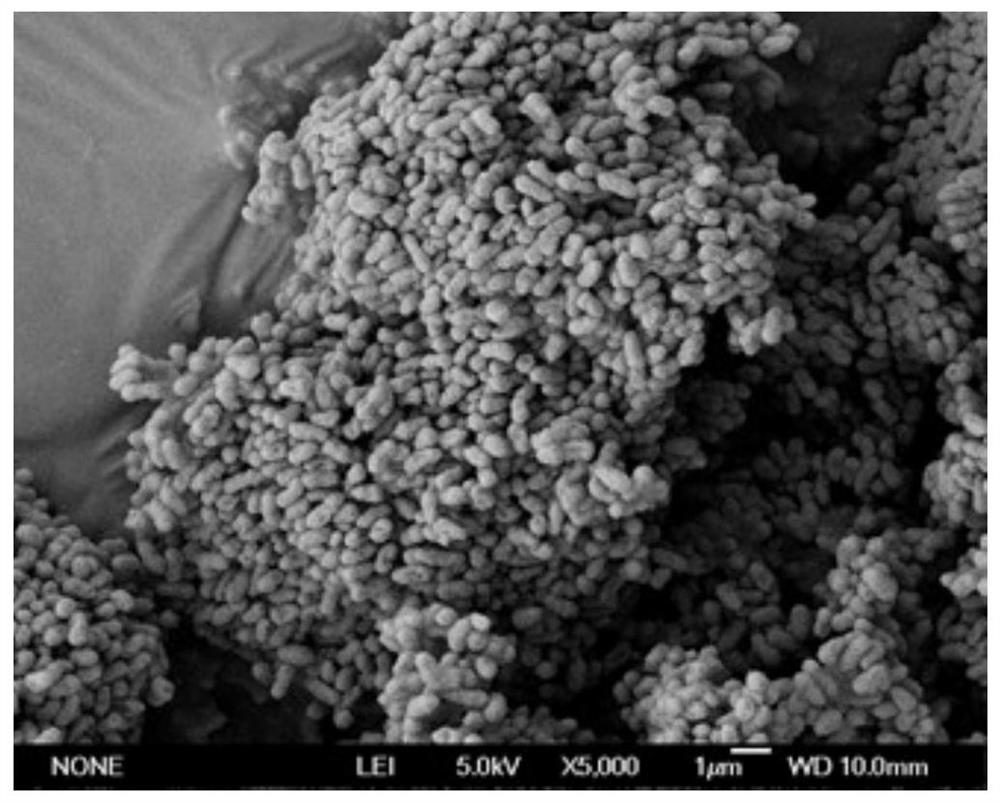Pseudomonas nitroreducens, microbial inoculum, application of Pseudomonas nitroreducens and microbial inoculum and method for degrading acetaldehyde
A Pseudomonas, nitro technology, applied in the field of microorganisms, can solve the problems of acetaldehyde tolerance and harsh growth environment requirements, and achieve the effects of in-situ pollutant degradation, less interference, and easy operation.
- Summary
- Abstract
- Description
- Claims
- Application Information
AI Technical Summary
Problems solved by technology
Method used
Image
Examples
Embodiment approach
[0054] According to a specific embodiment of the present invention, the inorganic salt comprises sodium chloride, potassium dihydrogen phosphate, dipotassium hydrogen phosphate, ammonium chloride, magnesium sulfate, calcium chloride and ferrous sulfate.
[0055] Wherein, the present invention has no special limitation on the amount of the added inorganic salt, which can be determined according to the type and content of the inorganic salt in the acetaldehyde-containing pollutant. For example, take NH 4 Cl 0.5-4g / L, NaCl4-8g / L, KH 2 PO 4 0.2-0.8g / L, K 2 HPO 4 ·3H 2 O 0.2-0.8g / L, CaCl 2 0.01-0.05g / L, MgSO 4 Taking 0.1-0.5g / L mixed inorganic salt solution as an example, based on each kilogram of the pollutants containing acetaldehyde and / or pollutants contained, the amount of the mixed inorganic salt solution can be 1-3mL / day.
[0056] In the present invention, when the acetaldehyde-containing pollutant is soil, in order to further promote the degradation efficiency of a...
preparation example
[0082] This preparation example is used to prepare the activated seed solution used in the following examples.
[0083] The LB medium was sterilized at 121°C for 20 min and cooled to room temperature. The nitroreductor Pseudomonas strain of the present invention was taken from a -80°C refrigerator, inoculated into the above-mentioned sterilized LB medium, and cultured at 170 rpm and 30°C for 12 hours to obtain an activated seed solution.
Embodiment 1
[0085] This example is used to illustrate the influence of culture conditions on the ability of the strains described in the present invention to degrade acetaldehyde.
[0086] The activated seed solution after activation was inoculated into carbon-free medium with an initial concentration of acetaldehyde of 500 mg / L according to different inoculum amounts (2%, 5%, 8%, 10%, 15%) respectively. Three parallels were set up for each gradient, and the blank culture medium was used as the control. The shake flask was cultured in a constant temperature shaker with a rotation speed of 170r / min and a temperature of 20°C (considering the volatility of acetaldehyde, the temperature was controlled at 20°C), and samples were taken at 0h, 6h, 12h and 24h to determine the amount of acetaldehyde in the medium. Aldehyde degradation rate and OD 600 .
[0087] Take the bacterial solution cultivated to the logarithmic phase and add it to the sterilized and cooled medium with an initial formalde...
PUM
 Login to View More
Login to View More Abstract
Description
Claims
Application Information
 Login to View More
Login to View More - R&D
- Intellectual Property
- Life Sciences
- Materials
- Tech Scout
- Unparalleled Data Quality
- Higher Quality Content
- 60% Fewer Hallucinations
Browse by: Latest US Patents, China's latest patents, Technical Efficacy Thesaurus, Application Domain, Technology Topic, Popular Technical Reports.
© 2025 PatSnap. All rights reserved.Legal|Privacy policy|Modern Slavery Act Transparency Statement|Sitemap|About US| Contact US: help@patsnap.com

